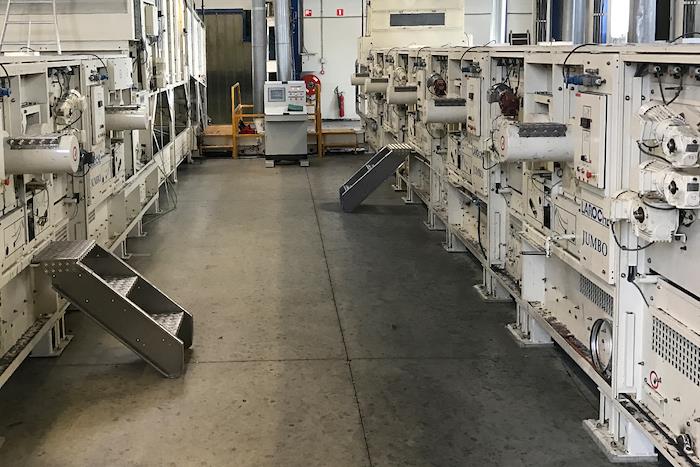In short
- Rabobank uses its knowledge, networks and financial solutions to scale up and further develop its customers’ solutions worldwide.
- Frankenhuis recycles discarded clothing and makes it into insulation material.
- Frankenhuis takes it one step further and wants to connect the collection and selection of clothing to the production of raw materials through new recycling methods.
Global Goal

Clothing that is no longer wearable often disappears into the incinerator. A company in Twente, Frankenhuis, prefers to make insulation material out of it but wants to take recycling a step further. Within five years, old textile should be made into high quality fibres to produce new clothing.
Twente is known for its textile industry. The foundation for Frankenhuis was laid in 1874. The company still exists, but now focuses on recycling “post-consumer textiles”, i.e., clothing that is no longer wearable. The clothing is pulled apart mechanically with thin pins, so that loose fibres are created. Because fibres can break in this process, the material is no longer suitable for clothing. However, it still works well in the car industry for rear shelves and isolation in car doors. The fibres are also used as insulation materials in washing machines and dishwashers.
For managing director Tich Vanduren, this way of recycling is not yet enough. “We want to come up with a system that allows us to make fibres of indistinguishable quality from the original. If we can make that economically viable, we will be truly circular. We want to connect the collection and selecting of clothing to the production of raw materials through new recycling methods. Many clothing items consist of different materials. Frankenhuis wants to be a material hub where all sorted and non-wearable clothing arrives. We rid them of any buttons, zippers and other “impurities.”
Depending on the follow-up processes, the materials at Frankenhuis can receive another treatment. This could be fiberising, but also cutting, grinding or another technique. The result is a raw material, which we can supply to companies that can do the next step in the recycling process. Ultimately, this will lead to raw materials from which thread is spun that can be processed into clothing.”
Related article(s)
“We are affiliated with the TexPlus foundation, together with parties such as Saxion University of Applied Sciences, Twente Milieu, De Beurs, Het Goed and Enschede Textielstad. All elements of a circular textile chain are present in this foundation. During the coming three years, we want to focus on connecting all the pieces of this chain so that we can be fully circular.”
“No one in this chain can do this alone. We need to work together. Someone’s output can be someone else’s input. You need to share information. It is vital to work together with many companies; you need volume to make these new recycling processes economically viable.”

“You need large volumes for new recycling methods, such as the chemical recycling of cotton or polyester. In our case, this is around ten thousand to thirty thousand tons, depending on the material. Only then can you offer a price-quality ratio that is equal to the original textile fibres.
Frankenhuis can mechanically process seven thousand to ten thousand tons of textile. We would like to expand with new processing methods so that we can also supply raw materials to chemical recycling companies.”
“We are now trying to get a subsidy for the research. However, we believe that we can set up an efficient and circular chain that will no longer need one in the end. You can feel the excitement in the market. There are many initiatives for working circularly. The next step is making this efficient and competitive. You need to work together for this and connect all the pieces of the chain. That is not easy, but we will succeed. We will, of course, run into some setbacks, but that is part of it.”
Growing Ideas is an online series of articles in which Rabobank highlights entrepreneurs that have a global impact.
Date: 6 February 2020 |
Source of tekst: Rabobank |
Author: twente.com








